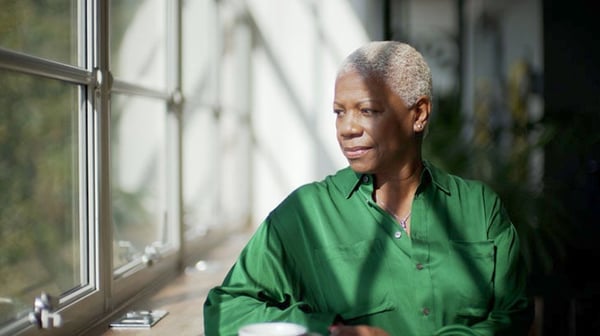Gender Pension Gap
Learn how you can challenge the retirement savings gap
We’ve all heard about the gender pay gap. If you’re a woman, you could be on a lower salary than male co-workers.
In fact, the gender pay gap was 13.1% as of 2024 – and older women are hit much harder than their younger counter-parts. Sadly, that unfair difference doesn’t end with retirement. There’s a gender pension gap too, and we reflect on this savings gap in the article to follow.

Retirement Income Calculator
Understanding how much your retirement income will be will help you work out what age you can retire. Our Retirement Income Calculator can help.
What’s the gender pension gap?
The gender pension gap is the percentage difference in income between men’s and women’s pensions. It begins at the very start of a woman’s career, with an initial pension gap of 16%, and at every age bracket women are shown to have lower pension pot sizes. By the time they reach retirement, the average size of a man’s pension pot is twice that of a woman’s.
How do men’s and women’s pension savings compare?
Generally, the average UK pension pot for men and women over 50 holds:
- £84,205 for men
- £39,654 for women
That means that men have more than twice as much saved in their pension pots as women, setting themselves up for a much more comfortable retirement. In contrast, a third of women have less than £5,000 in their pension pot, and are more likely to not know the size of their pension pot at all.
Why does the gender pension gap exist?
Our research shows that the difference in pension pot sizes between men and women begins right at the start of their careers. This initial gap in pension savings starts at 16%, but can double by the time women reach their 40s. By the time they’re in their fifties it could be 51% and finally when they reach retirement their pension savings could be 55% smaller on average.
Katharine Photiou, Managing Director of L&G's Workplace Savings, says:
“It’s time women stopped being penalised for things outside of their control, like the high cost of childcare. Millions of people would benefit from a wider range of support services to make more informed decisions about their savings and investments, particularly women who we know feel significantly less confident, and who are more likely to struggle on not knowing where to start when it comes to making financial decisions.
This support needs to be personalised in order to achieve any real change. But first we need to increase awareness of the current situation. For example, too few know about the flexibility that couples have in being able to contribute to their partners’ pension while they are on parental leave or the fact that pensions can be included in divorce proceedings.”
There are many reasons for the pensions gap, including the fact that women are still paid less and are less likely to be in senior leadership positions, resulting in lower pay and lower pension contributions. They are more likely to take career breaks for childcare or as an unpaid carer and are more likely to work part time or reduced hours, as well as self-identifying as having lower confidence when it comes to savings and investments.
Divorce is another factor that affects men’s and women’s pension pots differently. Separation can have a huge impact on pension and retirement income, but only 7% of people seek financial advice as part of their divorce.
Women are more likely to waive rights to a partner’s pension as part of a divorce, despite entitlement to a portion of their husband’s private pension wealth, and are likely to see their annual income fall following the separation. With one in three divorces occurring after the age of 50, considering the impact on retirement is really important.
Why is private pension wealth so important, especially when it comes to women’s pensions?
According to our research, £25,000 a year is the average income target for retirement for people over 50 and still working. For many people, their income will be from a combination of a private pension, state pension, savings and other income sources. The new State Pension for 2025/26 is £11,973 a year, leaving many short of the retirement lifestyle they plan to enjoy in later life.
What can you do about the gender pension gap?
The gender pension gap is a challenge for our whole society. While many factors are outside of our control, there are steps that you personally can take to push back against it. We have some tips to help you be better informed:
- Use our Retirement Income Calculator to see how much money you could get when you retire, and make sure you’re saving the right amount ahead of that
- Contribute as much as you can to your pension - and start early! It will give your pot more potential to grow
- Talk through your pension planning with your partner. Make sure you know about each others' saving plans, contribution limits and that you’re both on the same page
- Carry out a regular Midlife MOT. That'll help you see how your finances are doing, and check in on your work and health wellbeing too
- Make use of free support like the MoneyHelper or Retirement Living Standards websites
- Keep a regular eye on your pension to make sure you're in full control of it and saving for your ideal future
Pushing back against the gender pension gap will help you safeguard your future and fully enjoy your retirement. In series three of our Rewirement Podcast we talk about women’s relationship with pensions, and why it’s so important to think about your pension early. With the right steps, the pensions gap doesn’t need to be a reality.
Related articles

Pensions and divorce

How to track down your old pensions
